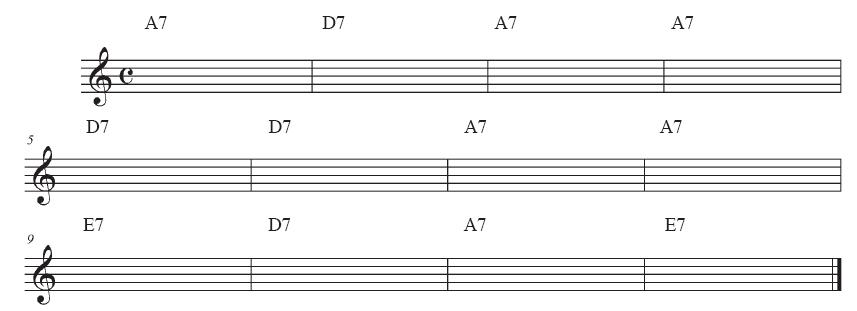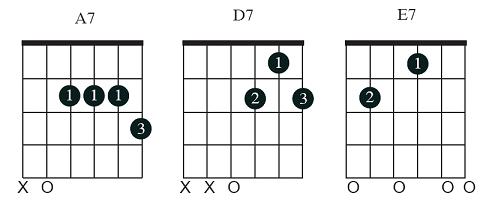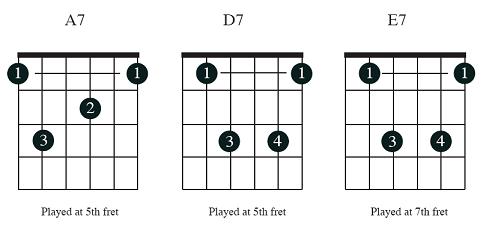The 12 Bar Blues – What is It And Why Not 8 or 10?
When it comes to learning blues music, it can mean a lot of things to different people. There are fingerstyle blues, Delta blues, Chicago blues and on and on. However, they all have one thing in common; which is a basic structure. Most blues are based on a 12 bar structure, hence the term: 12 bar blues.
There are other blues forms like the 8 bar blues, 16 bar blues, etc, but they are not as common as the 12 bar blues. You also need to understand that blues can be played in major or minor keys but for the sake of simplicity, we will stick to the major keys in this lesson and learn a couple of 12 bar blues variations.
What Is the 12 Bar Blues Made Up Of?
A 12 bar blues progression consists of three chords commonly referred to as the 1, 4 and 5 chords of a particular key. Now, we getting into a bit of music theory and not really something I want to get into deeply at the moment.
It is however, something that you might hear when listening to a discussion about the blues. In brief, the numbers refer to note positions in a major scale. The C major scale has the notes:
![]()
As you can see the notes in the 1, 4 and 5 positions are C, F, and G so the chords in a 12 bar blues in the key of C would be C, F and G. Another thing about the chords in a major blues is that are typically dominant 7th chords. Again, this is more of a theory discussion but basically it means you play C7, F7 and G7 instead of just plain old C, F and G.
Here is a chart of the 1, 4 and 5 chords in some typical blues keys for guitar.

Once you master the basic form of the 12 bar blues and have knowledge about the 1, 4 and 5 chords, it becomes very easy to play the blues in different keys.
The ease of learning and convenient key transposition is the main reason why the blues are a staple at jam sessions. Interestingly, the blues structure also forms the basis for thousands of rock songs. And in my opinion, it’s a must learn for anyone who’s even halfway serious about learning the guitar.
Let’s Take a Look at the Typical 12 Bar Blues Form…
12 Bar Blues In A

Download .mp3 file for audio example 1 ( Right-click Save Target as… )
Here are the chords used in audio example 1:
 Audio example 2 uses the same chord progression but uses the following guitar barre chords instead of the chords above.
Audio example 2 uses the same chord progression but uses the following guitar barre chords instead of the chords above.

Download .mp3 file for audio example 2 ( Right-click Save Target as… )
Personally, I prefer the timbre of playing with barre chords and I think they sound better than open chords. With barre chords, you will also have more control over your rhythm playing as you could execute string muting techniques between each strum.
That said, the open-position chords are still useful in some situations and it doesn’t hurt to learn a little more. Anyways, the choice is yours. Whatever you play should be dictated by experience and the type of sounds you want to hear.
The Ultimate Blues Guitar Resource
Get instant access to over 60 blues jam tracks, 3 hours of video lessons, step-by-step improvisation guides and more… Blues Jam Session is the easiest way for anyone to master the blues and take your guitar playing to a higher level!
Click here to download Blues Jam Session instantly…







Leave A Comment